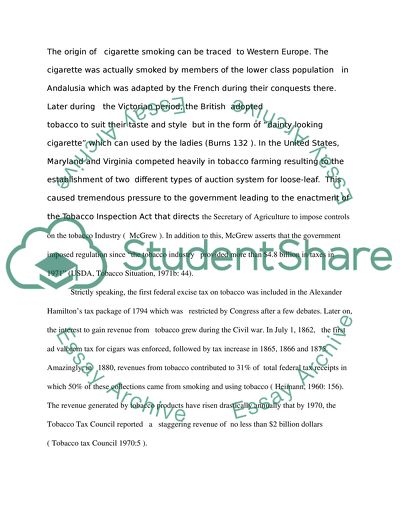Cite this document
(“The Possible Benefit from Tobacco Term Paper Example | Topics and Well Written Essays - 2000 words”, n.d.)
Retrieved from https://studentshare.org/social-science/1554176-cigarette-taxes
Retrieved from https://studentshare.org/social-science/1554176-cigarette-taxes
(The Possible Benefit from Tobacco Term Paper Example | Topics and Well Written Essays - 2000 Words)
https://studentshare.org/social-science/1554176-cigarette-taxes.
https://studentshare.org/social-science/1554176-cigarette-taxes.
“The Possible Benefit from Tobacco Term Paper Example | Topics and Well Written Essays - 2000 Words”, n.d. https://studentshare.org/social-science/1554176-cigarette-taxes.


